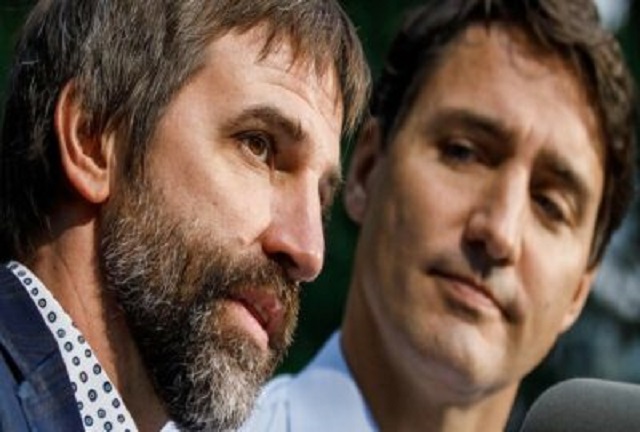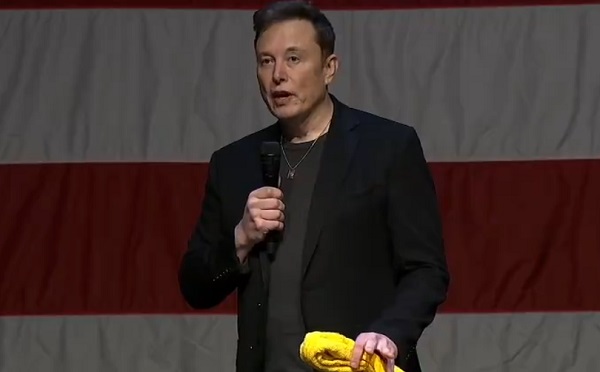Energy
Why Eastern Canada Needs to Support Western Provinces and Reject the Government’s Energy Policies

From EnergyNow.ca
By Catherine Swift
There are currently about 400 different laws, regulations, taxes and other measures in Canada that serve as greenhouse gas (GHG) reduction measures. No one has a clue which of them are effective or useless or how much they are damaging our economy and reducing Canadians’ standard of living needlessly.
Alberta
REPORT: Alberta municipalities hit with $37 million carbon tax tab in 2023

Grande Prairie. Getty Images photo
From the Canadian Energy Centre
Federal cash grab driving costs for local governments, driving up property taxes
New data shows the painful economic impact of the federal carbon tax on municipalities.
Municipalities in Alberta paid out more than $37 million in federal carbon taxes in 2023, based on a recent survey commissioned by Alberta Municipal Affairs, with data provided to the Canadian Energy Centre.
About $760,000 of that came from the City of Grande Prairie. In a statement, Mayor Jackie Clayton said “if the carbon tax were removed, City property taxes could be reduced by 0.6 per cent, providing direct financial relief to residents and businesses in Grande Prairie.”
Conducted in October, the survey asked municipal districts, towns and cities in Alberta to disclose the amount of carbon tax paid out for the heating and electrifying of municipal assets and fuel for fleet vehicles.
With these funds, Alberta municipalities could have hired 7,789 high school students at $15 per hour last year with the amount paid to Ottawa.
The cost on municipalities includes:
Lloydminster: $422,248
Calgary: $1,230,300 (estimate)
Medicine Hat: $876,237
Lethbridge: $1,398,000 (estimate)
Grande Prairie: $757,562
Crowsnest Pass: $71,100
Red Deer: $1,495,945
Bonnyville: $19,484
Hinton: $66,829
Several municipalities also noted substantial indirect costs from the carbon tax, including higher rates from vendors that serve the municipality – like gravel truck drivers and road repair providers – passing increased fuel prices onto local governments.
The rising price for materials and goods like traffic lights, steel, lumber and cement, due to higher transportation costs are also hitting the bottom line for local governments.
The City of Grande Prairie paid out $89 million in goods and services in 2023, and the indirect costs of the carbon tax “have had an inflationary impact on those expenses” in addition to the direct costs of the tax.
In her press conference announcing Alberta’s challenge to the federal carbon tax on Oct. 29, 2024, Premier Danielle Smith addressed the pressures the carbon tax places on municipal bottom lines.
“In 2023 alone, the City of Calgary could have hired an additional 112 police officers or firefighters for the amount they sent to Ottawa for the carbon tax,” she said.
In a statement issued on Oct. 7, 2024, Ontario Conservative MP Ryan Williams, shadow minister for international trade, said this issue is nationwide.
“In Belleville, Ontario, the impact of the carbon tax is particularly notable. The city faces an extra $410,000 annually in costs – a burden that directly translates to an increase of 0.37 per cent on residents’ property tax bills.”
There is no rebate yet provided on retail carbon pricing for towns, cities and counties.
In October, the council in Belleville passed a motion asking the federal government to return in full all carbon taxes paid by municipalities in Canada.
The unaltered reproduction of this content is free of charge with attribution to the Canadian Energy Centre.
Energy
Global fossil fuel use rising despite UN proclamations

From the Fraser Institute
By Julio Mejía and Elmira Aliakbari
Major energy transitions are slow and take centuries, not decades… the first global energy transition—from traditional biomass fuels (including wood and charcoal) to fossil fuels—started more than two centuries ago and remains incomplete. Nearly three billion people in the developing world still depend on charcoal, straw and dried dung for cooking and heating, accounting for about 7 per cent of the world’s energy supply (as of 2020).
At the Conference of the Parties (COP29) in Azerbaijan, António Guterres, the United Nations Secretary-General, last week called for a global net-zero carbon footprint by 2050, which requires a “fossil fuel phase-out” and “deep decarbonization across the entire value chain.”
Yet despite the trillions of dollars already spent globally pursuing this target—and the additional trillions projected as necessary to “end the era of fossil fuels”—the world’s dependence on fossil fuels has remained largely unchanged.
So, how realistic is a “net-zero” emissions world—which means either eliminating fossil fuel generation or offsetting carbon emissions with activities such as planting trees—by 2050?
The journey began in 1995 when the UN hosted the first COP conference in Berlin, launching a global effort to drive energy transition and decarbonization. That year, global investment in renewable energy reached US$7 billion, according to some estimates. Since then, an extraordinary amount of money and resources have been allocated to the transition away from fossil fuels.
According to the International Energy Agency, between 2015 and 2023 alone, governments and industry worldwide spent US$12.3 trillion (inflation-adjusted) on clean energy. For context, that’s over six times the value of the entire Canadian economy in 2023.
Despite this spending, between 1995 and 2023, global fossil fuel consumption increased by 62 per cent, with oil consumption rising by 38 per cent, coal by 66 per cent and natural gas by 90 per cent.
And during that same 28-year period, despite the trillions spent on energy alternatives, the share of global energy provided by fossil fuels declined by only four percentage points, from 85.6 per cent to 81.5 per cent.
This should come as no surprise. Major energy transitions are slow and take centuries, not decades. According to a recent study by renowned scholar Vaclav Smil, the first global energy transition—from traditional biomass fuels (including wood and charcoal) to fossil fuels—started more than two centuries ago and remains incomplete. Nearly three billion people in the developing world still depend on charcoal, straw and dried dung for cooking and heating, accounting for about 7 per cent of the world’s energy supply (as of 2020).
Moreover, coal only surpassed wood as the main energy source worldwide around 1900. It took more than 150 years from oil’s first commercial extraction for oil to reach 25 per cent of all fossil fuels consumed worldwide. Natural gas didn’t reach this threshold until the end of the 20th century, after 130 years of industry development.
Now, consider the current push by governments to force an energy transition via regulation and spending. In Canada, the Trudeau government has set a target to fully decarbonize electricity generation by 2035 so all electricity is derived from renewable power sources such as wind and solar. But merely replacing Canada’s existing fossil fuel-based electricity with clean energy sources within the next decade would require building the equivalent of 23 major hydro projects (like British Columbia’s Site C) or 2.3 large-scale nuclear power plants (like Ontario’s Bruce Power). The planning and construction of significant electricity generation infrastructure in Canada is a complex and time-consuming process, often plagued by delays, regulatory hurdles and substantial cost overruns.
The Site C project took around 43 years from initial feasibility studies in 1971 to securing environmental certification in 2014. Construction began on the Peace River in northern B.C. in 2015, with completion expected in 2025 at a cost of at least $16 billion. Similarly, Ontario’s Bruce Power plant took nearly two decades to complete, with billions in cost overruns. Given these immense practical, financial and regulatory challenges, achieving the government’s 2035 target is highly improbable.
As politicians gather at high-profile conferences and set ambitious targets for a swift energy transition, global reliance on fossil fuels has continued to increase. As things stand, achieving net-zero by 2050 appears neither realistic nor feasible.
Authors:
-

 Brownstone Institute18 hours ago
Brownstone Institute18 hours agoThe Most Devastating Report So Far
-

 Economy1 day ago
Economy1 day agoCOP 29 leaders demand over a $1 trillion a year in climate reparations from ‘wealthy’ nations. They don’t deserve a nickel.
-

 Censorship Industrial Complex22 hours ago
Censorship Industrial Complex22 hours agoAnother Mass Grave?
-

 ESG5 hours ago
ESG5 hours agoCan’t afford Rent? Groceries for your kids? Trudeau says suck it up and pay the tax!
-

 Alberta21 hours ago
Alberta21 hours agoMAiD In Alberta: Province surveying Albertans about assisted suicide policies
-

 Energy1 day ago
Energy1 day agoOttawa’s proposed emission cap lacks any solid scientific or economic rationale
-

 Alberta1 day ago
Alberta1 day agoOn gender, Alberta is following the science
-

 International6 hours ago
International6 hours agoElon Musk praises families on X: ‘We should teach fear of childlessness,’ not pregnancy





The federal Liberal government’s approach to energy policy has created problematic regional divisions across Canada. It’s time for the East to reject these crass politics and show greater support for the West.
Two recent court decisions — one at the Supreme Court and another at the Federal Court — have ruled against the federal government with respect to the Impact Assessment Act (the “No More Pipelines Bill”) and the single-use plastics ban. The courts found these laws to be unconstitutional as the federal government had intruded on provincial jurisdiction, among some other considerations such as the absurdity of declaring plastics “toxic.”
Around the same time, Environment Minister Steven Guilbeault announced a punitive new emissions cap on the oil and gas industry at COP28, which was also attended by Alberta Premier Danielle Smith and Saskatchewan Premier Scott Moe. This was seemingly timed to embarrass Guilbeault’s provincial counterparts and the Canadian oil and gas executives in attendance.
Back in October, Prime Minister Justin Trudeau announced a three-year exemption for home heating oil from the carbon tax. As heating oil is only used extensively in the Atlantic provinces, this was clearly an attempt to win back sharply declining Liberal support in that region. After Liberals claimed the carbon tax must be applied everywhere — in every industry and every region — this move served as a complete refutation of everything the Liberals had said before. It completely undermined their rationale for the carbon tax.
Meanwhile, countries around the world such as the United Kingdom and much of the European Union have been abandoning or significantly watering down their “net-zero” plans. Auto manufacturers are backing off production of electric vehicles (EVs) as they are not selling and all the lofty goals of the climate-crisis crowd are being questioned, as it has become clear the impact of these policies is hugely damaging to the economy and our standard of living.
For the trillions of dollars spent around the globe to attain the elusive net-zero target, very little has been achieved other than negative impacts on average citizens. Meanwhile, an elite class of “green” activists and government officials travel around the world first-class on the taxpayers’ dime, spewing much carbon in the process.
There are currently about 400 different laws, regulations, taxes and other measures in Canada that serve as greenhouse gas (GHG) reduction measures. No one has a clue which of them are effective or useless or how much they are damaging our economy and reducing Canadians’ standard of living needlessly. This is because the Trudeau government never evaluates the effectiveness of its policies.
The Liberals first sold us the carbon tax as the only measure needed to reduce GHGs, arguing it was a market-based mechanism that would motivate consumers and businesses to make their own sensible decisions to reduce fossil fuel usage. We were also told by former environment minister Catherine McKenna the carbon tax would never exceed $50 a tonne, which we now know was just one of many Liberal bald-faced lies as the tax is slated to increase to at least $170/tonne by 2030.
Despite dishonest claims the carbon tax was the only measure needed, we have subsequently seen the so-called Clean Fuel Standard, the absurdly red-tape intensive Impact Assessment Act (which the Supreme Court has now overthrown), and Guilbeault’s recent emissions cap.
Interestingly, other parts of the economy emit similar amounts of GHGs as the oil and gas sector, but those industries are not subject to an emissions cap. Could it be because those industries are located in regions that tend to vote Liberal, unlike Alberta and Saskatchewan? Perish the thought!
Throughout all of the climate policy overkill, the provinces of Alberta and Saskatchewan have remained steadfast in opposing foolish federal government initiatives based on facts, science and constitutional law. All Canadians should know that Alberta in particular is a disproportionately significant contributor to the rest of Canada in many ways — equalization payments, contributions to programs such as CPP and Employment Insurance as well as personal and corporate taxation and royalty revenue from the oil and gas industry.
It was truly ironic that, in the context of the federal budget earlier this year, Finance Minister Chrystia Freeland boasted that government revenues had come in higher than forecast. Yet the key source for this excess revenue was the oil and gas sector the Liberals are working hard to kill.
Alberta and Saskatchewan have been doing yeoman’s work defending the jurisdictional rights of all provinces and opposing the costly and unproductive federal government policies. At the same time, their success is boosting the economy of the whole country.
While Trudeau plays his destructive and divisive regional games — putting in place policies that benefit some parts of Canada while punishing others — all in the name of Liberal votes, the whole of Canada should call his bluff and support the leadership role that is being taken by the Prairie provinces.
The next federal election would be an ideal time to demonstrate that support.
Catherine Swift is president of the Coalition of Concerned Manufacturers and Businesses of Canada